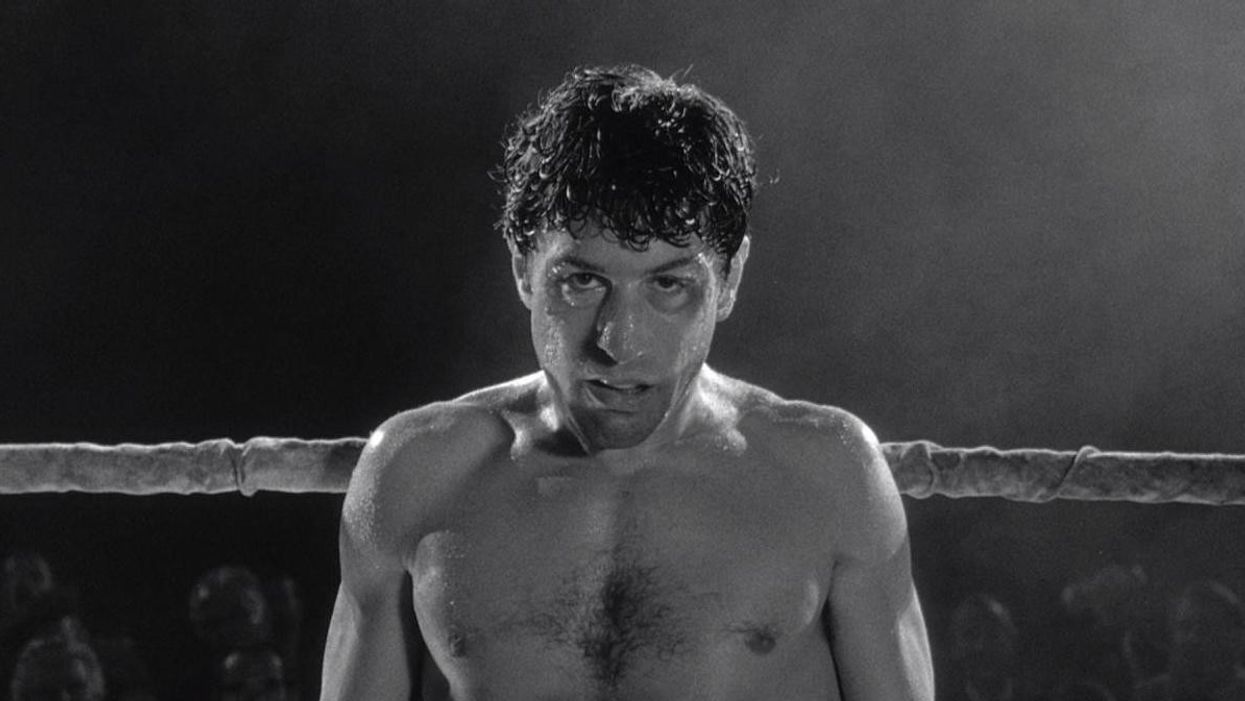Watch: How Thelma Schoonmaker, Martin Scorsese's Editor, Tamed the Beastly 'Raging Bull'
This short film takes a look at the work of Thelma Schoonmaker, Martin Scorsese's long-time editor, and her Academy Award-winning work on Raging Bull.

Frequently voted one of the best films of the 1980s, Martin Scorsese's Raging Bull, the story of self-destructive pugilist Jake La Motta, was a labor of love and genius. This is particularly true on the part of the film's editor, Thelma Schoonmaker, ACE, who played the KEM editing machine like a harpsichord. A long-time Scorsese collaborator, she would win her first Academy Award for the epic.
Raging Bull is a strange beast, and yet Schoonmaker tamed it, shaping unwieldy footage into a brutal, yet sinuous piece of art.
A new short film by Menno Kooistra looks at the editing of two key scenes in the film. (We had the pleasure of seeing Ms. Schoonmaker break down the same scenes at Tribeca a few years ago, though there is no video of that event, and this is a great opportunity to hear the words from the woman herself.)
On the day of its release, Vincent Canby, in The New York Times, wrote that Raging Bull was different "from all other fight movies, in fact, from most movies about anything."
According to Michael Chapman, the film's cinematographer, the film was envisioned during production as an opera, with the boxing sequences as the arias and the "very simply shot family sequences" the quiet between storms. Shot in an iconic and sumptuous black and white that captured the mid-century decades during which the film takes place (ironically, the filmmakers had planned to shoot in color, though there are short home movie sequences that aren't in black and white), the film is remarkable for both its acute psychological realism as well as its almost deranged quality of violence.
Technical Innovations
From the footage she received, Schoonmaker set to work and soon fashioned her very own bespoke inferno from Chapman and Scorsese's images.
Using her finely-honed sense of rhythm—she saw the film's footage "like a tapestry"—Schoonmaker had an embarrassment of riches to work with: the boxing scenes were shot with different sized rings to capture the interiority of La Motta from shot to shot. Unlike most boxing pictures, which position the camera outside the ring, Raging Bull placed the camera in the middle of the action, on a dolly. What's more, Scorsese changed the frame rate from 24 to 48 and 120 in-camera, without cutting—something that would be almost unheard of today, given the difficulty of racking speed, focus, and shutter, when there are perfectly sensible ways to do all these things with digital.
Schoonmaker reserves gives much of her praise for Sound Designer and Sound Effects Editor Frank Warner, whose mix of the boxing scenes included animal noises, as well as detuned and filtered bass drums (effects which Warner burned at the end of production), not to mention the $90,000 that were spent on flashbulbs during production, both for the sound and for their use as cutting devices. (And, for the record, Schoonmaker thinks that boxing "should be banned.")
The Most Difficult Scene
Schoonmaker described the following scene as the "most difficult in her entire career," because she had "two hours of Robert De Niro" improvising, as well as two hours of Joe Pesci doing the same, and it was her job "to make it seem like a scene, which was extremely difficult."
Other than the richness of the material and the difficulty of cutting between two of the "greatest improvisers in the world," there was an added challenge: Scorsese was adamant about shooting in La Motta's actual kitchen, a space too tiny for a large crew, and also fairly sweltering when filled with a movie crew and lights. This is not to mention that the space was too small for two cameras. Thus, cutting the scene together in a way that foregrounded the acting was intensely difficult; to Schoonmaker's infinite credit, though, she pulled it off and made it look effortless.
It's hard enough to edit improvisation (or anything, really, if you've tried it) with two cameras under optimal conditions, but with just one camera and over four hours of footage, it takes a degree of almost superhuman finesse. To this day, Schoonmaker's work on the film is awe-inspiring to watch. Raging Bull is a strange beast, and yet Schoonmaker tamed it, shaping unwieldy footage into a brutal, yet sinuous piece of art.
To see the superhuman speed with which she works, check out this video from Eyes on Cinema that shows Schoonmaker and Scorsese working together on Life Lessons, a short from the anthology film New York Stories. And for even more on Schoonmaker's work on Raging Bull, check out our article from the editor's incredible and in-depth discussion of Raging Bull at the Tribeca Film Festival.
Source: Film School Rejects











